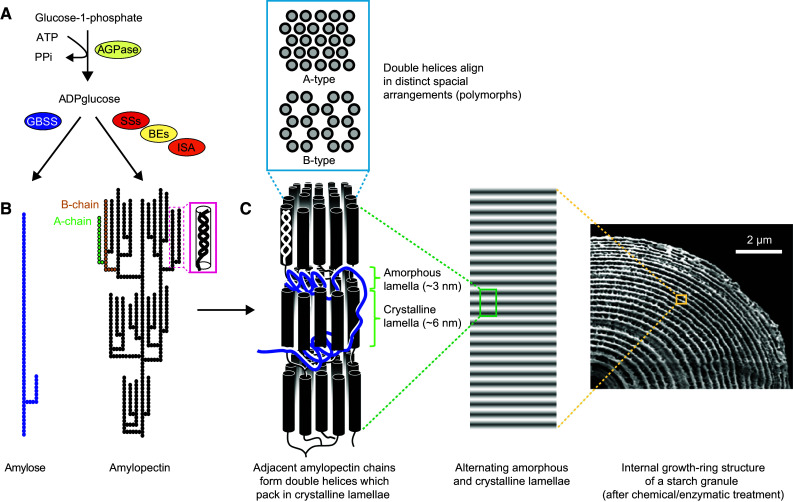Fig. 1.

The structure and biosynthesis of starch. a Overview of the core starch biosynthesis pathway. ADPglucose pyrophosphorylase (AGPase) produces ADPglucose, the substrate of starch synthases (SSs). Granule-bound starch synthase (GBSS) synthesizes amylose, while soluble SSs, branching enzymes (BEs) and isoamylase-type debranching enzyme (ISA) collectively synthesize amylopectin. b Molecular structure of amylose and amylopectin (according to the cluster model), showing its branching pattern and formation of secondary structures. Filled, joined circles represent individual glucosyl residues. c High-order alignment of amylopectin double helices. Each growth ring (right) has a thickness of ca. 200–400 nm and contains a semi-crystalline region and an amorphous region. The semi-crystalline region consists of alternating crystalline lamellae (containing the linear parts of the chains) and amorphous lamellae (containing most of the branch points) which stack with a periodicity of ~9–10.5 nm (middle). Depending on the exact architecture of the amylopectin giving rise to the clusters, the double helices either arrange as densely packed A-type polymorph or less dense hexagonal B-type polymorph (top). A mixture of A and B is also possible and named C-type polymorph (not shown). Figure composed using parts from [30] (with permission from Elsevier) and [284] (thearabidopsisbook.org; Copyright American Society of Plant Biologists)
